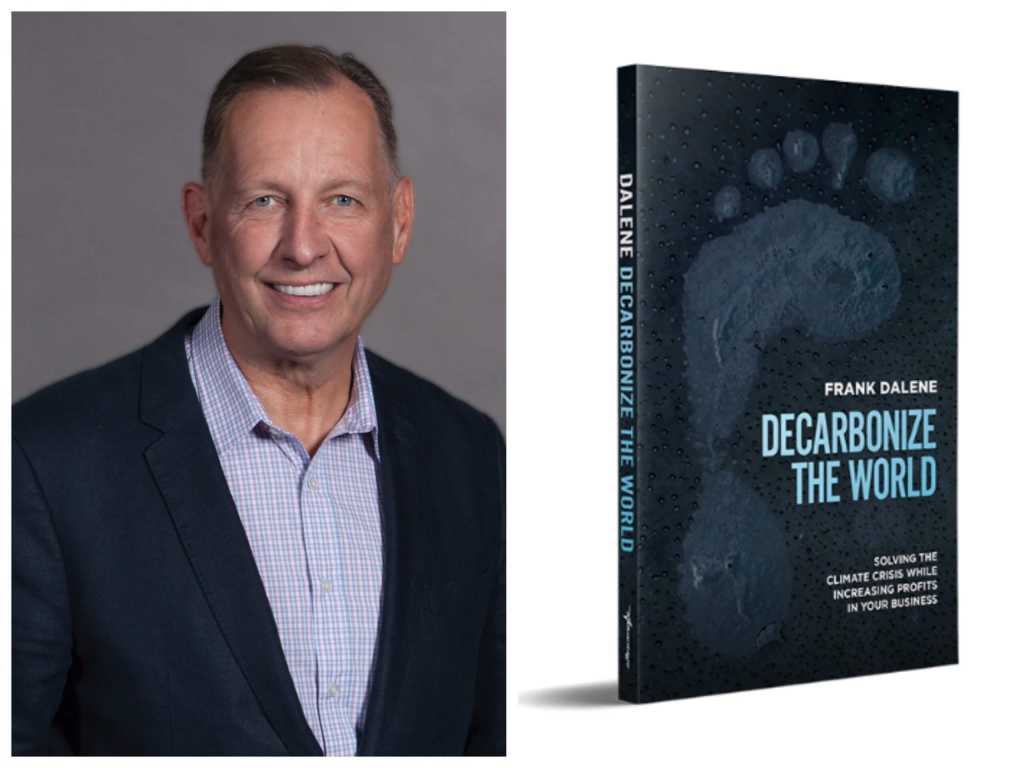Frank Dalene has always been passionate about nature and the environment. The Norwegian-born president/CEO of Bridgehampton-based luxury home builder Telemark Inc. has developed an initiative that he believes could lead to widespread adoption of greener technologies and help combat climate change. This initiative is explained in Dalene’s new book, Decarbonize the World, which was published last fall by Forbes Books and is available from Amazon, Barnes & Noble and other booksellers.
Dalene, who came to the United States as a baby, grew up in a Norwegian community in St. James. “It’s part of Norwegian culture to go hiking and enjoy nature and to be conscious of the environment,” he says. “I was brought up with a sense of responsibility and stewardship toward the environment.”
Telemark, which Dalene co-founded with his brother, Roy, in 1978, has aways been an early adopter of green technologies. Dalene, who also leads Telemark Service & Maintenance Inc. and Bridgehampton Millwork Inc., has long been active in the local green community. He founded the Hamptons Green Alliance (HGA), a nonprofit professional association that promotes sustainable, resilient building and maintenance practices. He also previously chaired the U.S. Green Building Council-Long Island Chapter’s East End Committee as well as the Town of East Hampton’s Energy Sustainability Advisory Committee, leading the town to adopt a 100% renewable energy goal in electricity, transportation and heating fuels — the first town on the East Coast to make such a commitment.
Telemark’s green accomplishments have included the completion of the Hamptons Green Alliance House, which according to the HGA was the first building in the world to be certified carbon neutral in the construction stage. Lessons learned from the HGA House have been applied to a second project, the HGA Fossil Fuel Free Home, which Dalene says is nearing completion.
More than a dozen years ago, Dalene began developing the concept of the International Carbon Equivalent Mechanism Attributed Neutrality (ICEMAN) carbon factor program, which he said could succeed where other programs to fight climate change have fallen short by “harnessing the positive market forces of competitive advantage.”
Here’s how it works: The ICEMAN system would provide an accurate carbon footprint of every product made, allowing consumers to choose products made with lower carbon footprints. This methodology would simplify the complex sciences developed to measure greenhouse gas emissions by converting those measurements into a universal, simple-to-understand indexing system. A certified label would be placed on the packaging of all products, identifying the product’s relationship to carbon neutrality. Customers could look at a product’s label and immediately know how close that product comes to carbon neutral — from its manufacturing process through its arrival in the store — as easily as they could read the nutrition information on a box of cereal.
“My system creates a financial benefit for companies that adopt renewable energy,” he says. “It’s a market-driven mechanism — companies can gain competitive advantage by adopting greener technologies — which I believe would be more powerful than mandates and carrot-and-stick approaches, which have been largely unsuccessful.”
In Europe’s social democracies, “there’s typically a top-down approach to change,” Dalene notes. “When the government mandates change, people tend to accept it. But in the U.S., which is more engrained in capitalism, change happens from the grass roots — when people form a groundswell that gives legislators the political capital to act.”
Dalene has obtained five certified service marks from the U.S. Patent and Trademark Office for the ICEMAN concept, as well as certifications in the European Union and Norway. As a project that would impact all manufacturers and products, Dalene says government involvement and support in the early stages would be integral to ICEMAN’s success.
“I have met with legislators and have bipartisan support among congressmembers and senators, who like that it’s a market-driven mechanism and who have gotten me appointments with high-level officials in the Environmental Protection Agency and Department of Energy,” Dalene says. “Everybody loves the idea, but implementing it would require funding, including the allocation of personnel, which would need to be approved by Congress. Unfortunately, it has been low on the list, but with the change in administration, the political capital to get it done has grown.”
Dalene wrote his book to explain the ICEMAN concept, but also to impress upon readers the urgency of the crisis. As the climate continues to change, it will likely trigger “feedback loops,” which will accelerate the process with devastating effects, he says.
“For instance, as global temperatures have risen, the tundra’s permafrost has begun to melt,” he explains. “Methane, which is trapped within the permafrost and is much more potent than carbon dioxide, is released into the atmosphere when the permafrost melts. This is contributing to the rising global temperature, which in turn causes more permafrost to melt and methane to be released, resulting in an exponential feedback loop that scientists believe will become irreversible.”
He adds, “We need to take action now.”























